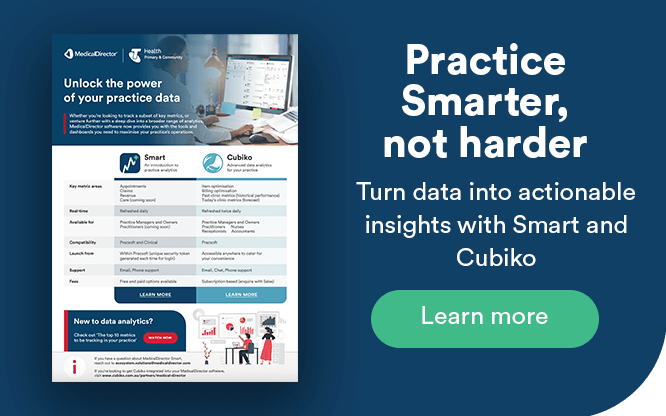Quick guide for patient feedback management
Patient feedback can be a valuable strategy for medical practices to gain deeper insights into how to improve patient experience and personalised care.
In this article, we take a look at a quick snapshot of how to put the right systems in place to collect and manage patient feedback in order to enable positive, patient-centric outcomes.
Why collect patient feedback?
The RACGP Patient Feedback Guide offers a wealth of information to explain the importance of patient feedback and how practices can implement steps to collect and analyse the feedback data in order to implement change.
RACGP suggests patient feedback can be used to:
- improve the quality of healthcare provided by your practice
- improve managing your practice workflow, such as administrative and reception services
- provide constructive feedback to your staff
- demonstrate that you value your patients’ views and needs
Collecting and responding to feedback also means patients are more likely to have positive experiences at your practice, which in turn leads to positive outcomes for patients. According to the RACGP, a good feedback system leads to better, more patient-centric practice, and a healthcare setting where patients are more likely to follow the advice and treatment provided by their GP and return to the practice and experience continuity of care.
This means patients are more likely to remain loyal to the practice and even recommend it to others. At the same time, the RACG highlights this leads to a reduced risk of medico-legal action and greater staff satisfaction.
Implement a well-designed feedback system
According to the National Health & Safety Guide for Day Procedure Services, the first thing practices need to consider is implementing an effective feedback wireframe. This includes putting in place efficient, comprehensive systems to collect, review, action and resolve patient feedback. The guide also suggests to periodically review the effectiveness of the organisation’s patient feedback system.
The guide stresses patient and carer feedback should be gathered systematically, using well-designed and, ideally, validated data collection tools. The data can then be analysed in a more transparent way in order to improve the quality of care.
Methods of collecting feedback
The RACGP outlines three primary methods of collecting feedback: questionnaires, focus groups and interviews.
Strategies for obtaining patient experience feedback may be formal, informal, online or offline. These may include:
- Using a validated survey instrument that incorporates the national core common patient experience questions
- Regularly collecting feedback from patients, and providing feedback to the workforce, governing body and consumers
- Contacting patients after their episode of care
What feedback can I collect?
According to the RACGP, feedback needs to address six themes:
- Access and availability
- Provision of information
- Privacy and confidentiality
- Continuity of care
- Communication and interpersonal skills of clinical staff
- Communication and interpersonal skills of administrative staff
Practices need to include a minimum of three topics under each patient feedback theme.
Every time you collect patient feedback – regardless of the method, timing, or tool used, the RACGP stresses you must collect each participant’s:
- age
- gender
- ethnicity
- Aboriginal and/or Torres Strait Islander status
- language(s) spoken at home or country of birth
- level of education
- Health Care Card status
- frequency of visits to the practice.
Have a feedback champion in the practice
According to the guide, allocating enough time, resources and people to support the feedback system is critical to ensure success. This includes designating an individual who is responsible for maintaining the integrity of the feedback system.
This ‘feedback champion’ can also help ensure that the practice team, patients and carers receive information about what has been learned from the feedback system, and how it has been used to generate improvements within the healthcare setting.










